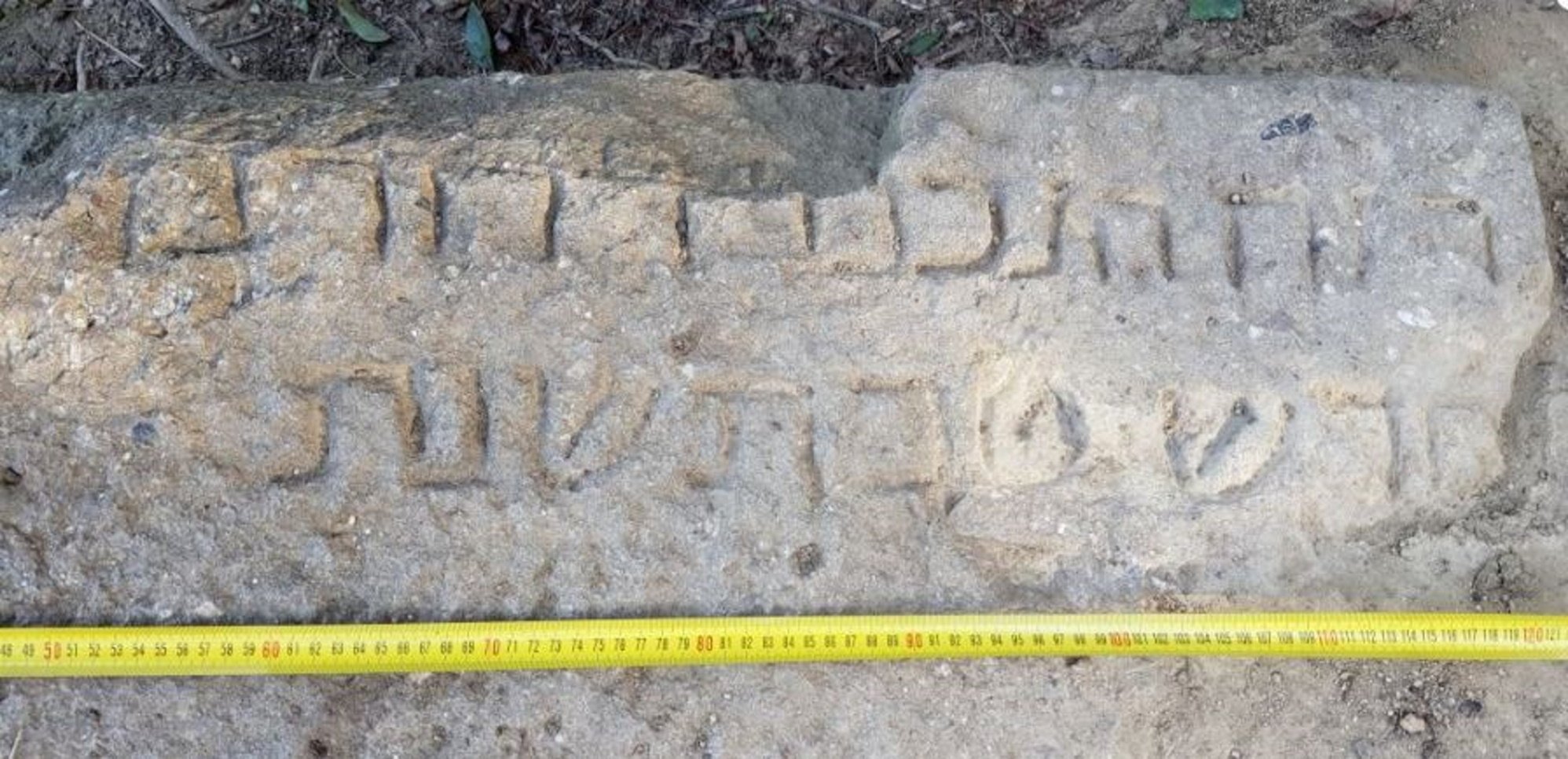On Barcelona's mountain of Montjuïc - it translates as "the mountain of the Jews" - a member of the public has stumbled across a large tombstone with inscriptions in Hebrew, from the ancient Jewish necropolis, the origin of the mountain's name. The Barcelona City Council conservation centre which cares for such discoveries has confirmed the find, which took place in January, and has carried out an urgent operation to recover it.
The tombstone is large (1.46 x 0.60 x 0.63 metres), and it has been confirmed that it is made of Montjuïc stone and is in a relatively good state of preservation, although some letters have been damaged. On the upper face is the Hebrew inscription, which allows it to be directly related to the ancient Jewish cemetery located on the mountain. While awaiting a more in-depth study, the tombstone - matzeva in Hebrew - reads: "In this tomb is buried the distinguished r(abbi) David s(on) of r(abbi) [day, not visible] of the month of Tevet of the year….” The month of Tevet is the fourth month of the Hebrew calendar, corresponds to a period between the months of December and January in the Gregorian calendar.
This is the text in Hebrew, with the phrase completed based on the parts which can be reliably made out:

The text of the tombstone found on Montjuïc, in which the name of David (penultimate word, reading from right to left) can be clearly recognized | SABCN
It is suspected that the tombstone was thrown down the mountain from its initial location, probably during the first half of the twentieth century, during construction processes: either that of the current Olympic Shooting range, built around 1907, or the construction of the first Amusement Park built on the mountain, in the 1930s.
According to researchers, the Jewish necropolis on Montjuïc, overlooking the Mediterranean Sea, was one of the most important in the whole Iberian peninsula and in Europe. It existed from the ninth century and survived until 1391, when the pogrom against Barcelona's Call - its Jewish neighbourhood - took place and the Jewish cemetery was also destroyed. Some tombstones were reused in buildings in the city itself, as can be seen in one part of the Plaça del Rei in the Barri Gòtic.

The location where the tombstone was found, on Avinguda de Miramar | SABCN
The discovery will expand the knowledge and information on the Jewish necropolis of Montjuïc. At the same time, the data will be added to the research project launched in 2014 by the Barcelona Archaeology Service (ICUB), with the aim of expanding knowledge of this heritage and archaeological element of the city.
During works carried out in the year 1945 on the mountain, 171 tombs were discovered, and in 2001, 557 more were located. The necropolis, located at the seaward end of Montjuïc, was declared by the Catalan government to be a Cultural Asset of National Interest in the category of a historic site, and is currently covered with a layer of earth to protect it. The total extension of the cemetery is not known, although it is thought to stretch from Barranc de Morrot, the ravine below Montjuic Castle, towards the northwest, taking in the lookout area of the Mirador de l'Alcalde, and including areas around the Olympic Shooting range and much of the current Joan Brossa Gardens.
In a document from 1368, the Jewish community of Tortosa defended the value of the tombs in its cemetery, which was also in danger, and equated them with those in Barcelona, which, it said, had existed for more than 500 years. This would place the origins of the necropolis in Barcelona, at least as far back as the middle of the 9th Century. There is also a text that refers to Montjuïc from the year 1091, which speaks of a donation that the Count of Barcelona, Ramon Berenguer II (1053-1097) was required to make to the Canonry of the Holy Cross and Saint Eulalia, and it speaks of the existence of "veteres iudeorum sepulturas".

